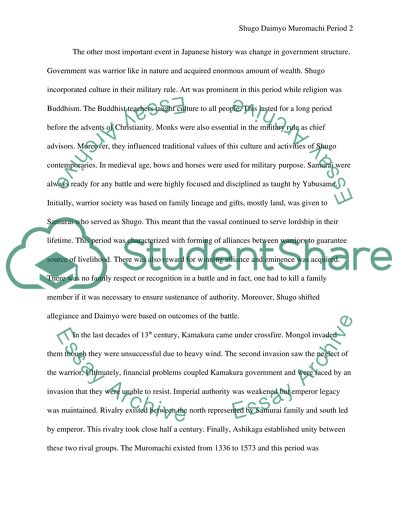Cite this document
(“Shugo Daimyo Muromachi Period. Japan in the Muromachi Age Essay”, n.d.)
Retrieved from https://studentshare.org/history/1398838-shugo-daimyo-muromachi-period-japan-in-the-muromachi-age
Retrieved from https://studentshare.org/history/1398838-shugo-daimyo-muromachi-period-japan-in-the-muromachi-age
(Shugo Daimyo Muromachi Period. Japan in the Muromachi Age Essay)
https://studentshare.org/history/1398838-shugo-daimyo-muromachi-period-japan-in-the-muromachi-age.
https://studentshare.org/history/1398838-shugo-daimyo-muromachi-period-japan-in-the-muromachi-age.
“Shugo Daimyo Muromachi Period. Japan in the Muromachi Age Essay”, n.d. https://studentshare.org/history/1398838-shugo-daimyo-muromachi-period-japan-in-the-muromachi-age.


